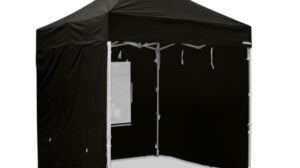Disclosure: This is a paid partnership with Michelin Canada. All opinions, as always, are my own.

Earlier this month, I visited Greenville South Carolina and shared my adventures as a guest of Michelin when I learned about tire safety, specifically how worn tires greatly impacts your family’s safety on the road. Since we’re uncovering truths here, I’ll share mine – before I left for South Carolina, I gave very little thought to the tires on my SUV. I switch them out from all-seasons to winter tires every six months or so and beyond that, I assumed that on one of those visits a tire technician would give us a heads up on when the tires were getting worn down and needed to be replaced.
Oh dear.
I’ve since come away from this media event learning how naive I was. Think about it. Like a brand new car off the lot, your brand new tires are worn the moment you start driving on them. Makes sense right? The issue at hand – when consumers make purchasing decisions on which brand of tires to buy, we’re basing it on new tire data. What happens after that point? Which tires hold up better than others? Until now that’s been anyone’s guess and Michelin wants to change that.
How does a brand get a message across to consumers of family products? Influencers, of course! And so, myself along with a group of some pretty awesome influencers visited Michelin Laurens Proving Grounds – a world class research and testing facility that’s also used by many of the leading vehicle manufacturers in the US. It was time to learn hands-on exactly how worn tires really perform.
First, we tested new and worn tires by two different tire brands on a wet driving course. We had obstacles to maneuver around, and a sharp turn as well – all to mimic a real-life defensive driving situation where we have to turn quickly. Through that experience, I learned very quickly that the tires on your car do indeed make a difference.
Let that sink in.

We also moved to a second driving scenario where we tested the wet braking. Again, we had four scenarios: Brand A New and Worn, and Brand B New and Worn. My professional driver and I discussed the different driving conditions in South Carolina vs Saskatchewan and I explained that on the prairies, drivers have to brake, and brake hard to avoid deer and even moose on the road. So, we had fun on our tests having him yell “Moose!” while I slammed on the brakes (HARD!) at the appropriate stop.You can see some of the fun from that video shared on my Instagram here!

Again, I had a very eye-opening experience. As you can see from the information above, again Brand A Worn performed better – stopped sooner – than Brand B New. Unbelievable, but it’s true because I experienced it with my own eyes and felt the car slide.
Back at the Laurens Proving Ground Conference Centre we learned more about tires and what makes one brand different from another. There are 3 components to good wet adherence:
1. Adherent Tread Compound (the right materials are needed, silica content is key, especially for wet traction)
2. Effective Tread Pattern (grooves and edges)
3. Proper Contact Patch Shape (the part of the tire that’s on the road at any given time, a rounded contact patch shape is better an a rectangular shape for water).
The thing is, consumers aren’t asking retailers about worn tire performance. We’re being told how amazing the tires are new, all the reasons why they will keep your family safe but the fact is, we spend more time driving on worn tires than we do on used tires and we need to ask how tires will perform over time. Michelin believes (as do I!) that tires should be designed to perform well through their useful life. Consumers need to be the ones to demand this info.
Now that I’ve shared what I learned, will you ask about worn tire performance the next time you’re shopping for tires?







wow…this is an eye-opening article, I’m not in the market for new tires just yet but will keep this in mind when I am!
Thanks for this useful post!
Definitely will be more wary of this topic. Important to note for all that drive.
I can only imagine the difference from worn to new!
This article makes me think more about my tires and how well they perform as they wear.
It is certainly important to check with retailers about tire wear.
Tires are what make your car stop! So dangerous to drive with worn out tires.
i know from experience with the tires we had on our car that weren;t even THAT worn how unsafe it is. crazy how much you can skid out even on dry road. such a very important thing to address
A great post, yes all tires are different, and this was a good post to explain that!
Its something I’ve never really considered. I check for wear but I didn’t realize different brands were so different in performance!
I know you were testing tires but it it looked like so much fun.
I had never thought to ask this question before. I am definitely going to pass the info on to my hubby.
Wow this is all amazing to know
What an awesome article! After reading this I talked to my husband about this and then we both checked our vehicles in!
Wow, great information! There is nothing scarier than losing control of your vehicle when it’s raining out… especially when your kids are in the car! Tires ARE important.
wow. Great info to know. I will pay much more attention to tires. now. Thanks!
I suspect I’m a danger to myself and others when it comes to tire safety.
So important! Hadn’t thought about this before, so it’s really useful to know.
very useful post. I need to tell hubby
Thanks, good advice and we need to ask how tires will perform over time.
So good to know this! Thank you
Very eye opening that there is THAT much of a difference with worn tires! I definitely need to look into replacing my own!
Wow, who knew! I will definitely keep this in mind when I’m in the market for new tires.